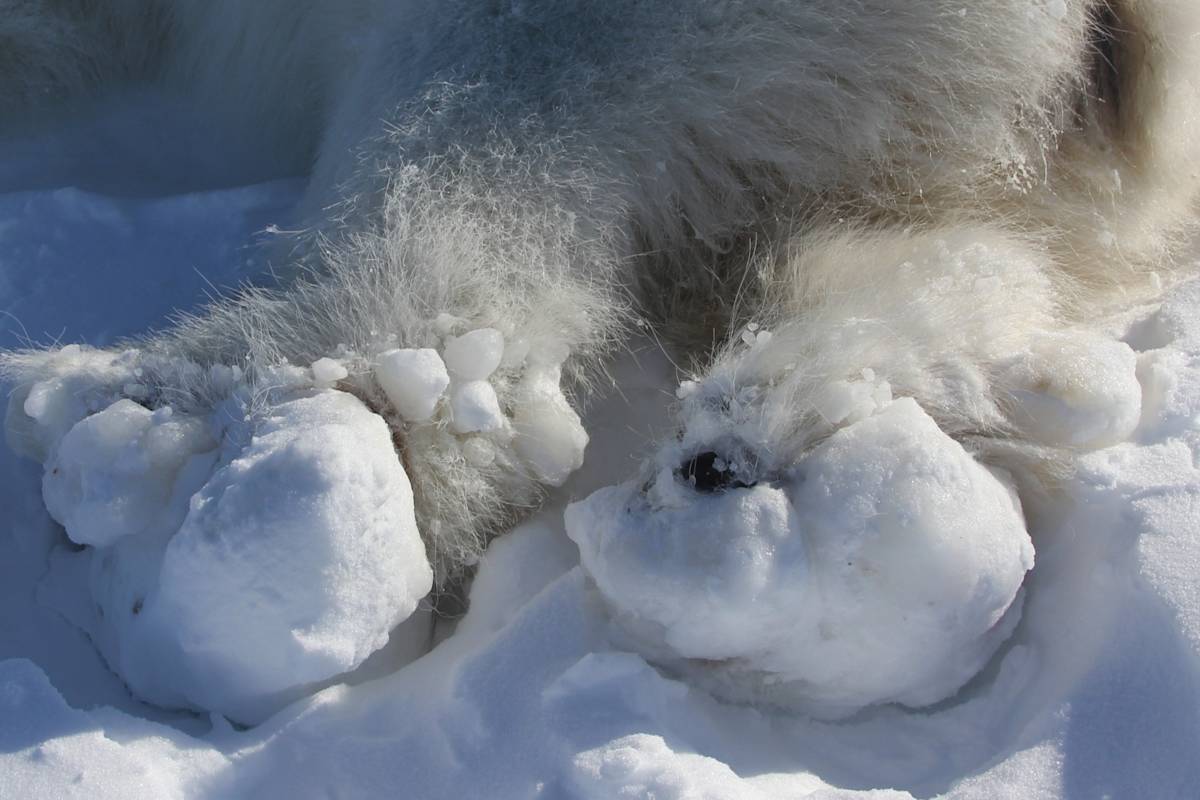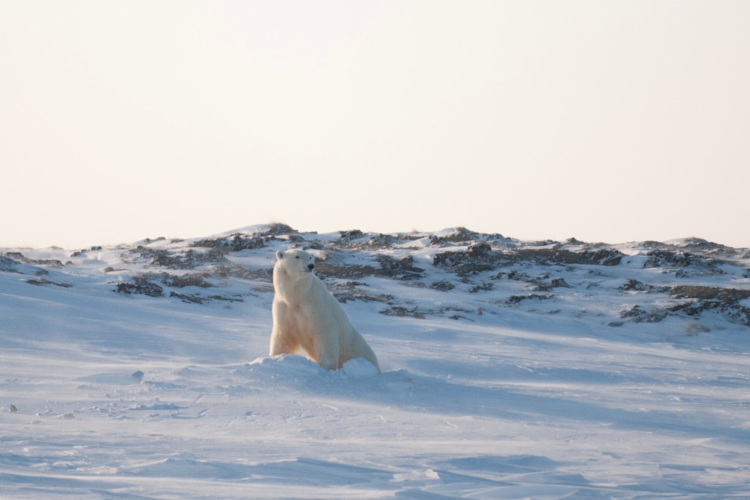Climate change is not only reducing the extent of Arctic ice; it may also be causing some of that ice to injure the feet of polar bears.
A new paper in the journal Ecology by Kristin Laidre of the University of Washington and Stephen Atkinson of the Government of Nunavut's Department of the Environment found that bears in two of the most northerly populations had suffered lacerations, skin ulcerations, and ice build-up on their feet. In the most severe cases, two bears had ice blocks up to 1 foot (30 centimeters) in diameter stuck to their foot pads, which caused deep, bleeding cuts and made it difficult for them to walk. Here, Kristin Laidre talks to us about the study and what it might mean.
How did you encounter these bears? I assume you were doing field surveys and just happened across them?
My co-author, Stephen Atkinson, was leading field work in Kane Basin between 2012 and 2014, and while he was there he was sending me photos of lesions and skin ulcerations that he was observing. And we didn't know really what to think of it.
Subsequently, I've been working in East Greenland for the last eight years. And as I progressed north, between 2018 and 2022, I started seeing the same thing, as well as extreme ice build up on the feet of bears. So Steven and I started looking in the literature and talking to colleagues, and we began to realize that this was something new.
Were all the impacts on the bears’ paws?
Yes, in our study, most of the issues were on the feet. There was some alopecia, or hair loss, on some parts of the bear's bodies. But you could see that was also related to ice build up. And in the past, I've caught several bears that had balls of ice in their fur. And that's not necessarily uncommon. I mean, polar bears live in extreme environments where they can get ice build up. But in our study, it was really the feet.
And nobody else that you've spoken to has noticed these conditions in any other populations that you're aware of?
No, I circulated images to Polar Bear Specialist Group colleagues, but honestly the people who see polar bears the most are the people who live in communities alongside bears and hunt for subsistence. And so part of the paper is the conversations we had with Indigenous polar bear hunters in East Greenland, in West Greenland, and in Nunavut. We didn't want to say this is something new without hearing what other people had observed.
And is it fair to say that they agreed that, yes, this is new?
Most of the hunters we spoke to had not seen this before. A few had, but it was also new to them. Many of them talked about how they experienced similar things with their sled dogs; when they take sled dogs out in slushy or wet conditions, they get similar ice build up, and it can be incredibly painful for the dogs and cause wounds.
So they hypothesized that the bears were experiencing something similar, which is along the lines of what we had been thinking, which is that it had to do with climate warming.
If I understand correctly, you’ve hypothesized a couple of specific mechanisms whereby this could happen. One is a greater number of cases of rain melting the surface of the ice, so bears walk on the melted surface which then freezes on their paws. And then warming is causing surface snow to melt and refreeze into a hard crust, and the bears’ paws break through that crust and cut their paws on the sharp edges. Is that correct?
Yeah, pretty much exactly that. And we also talk about a third mechanism, because these bears are so far north. I mean, our observations were from around 77 degrees up to 82 degrees north, so these are very much High Arctic bears. During the springtime, many of them live on landfast ice or around glaciers, so they're quite far from open water. And during springtime there can be melting in front of glaciers, where seawater seeps into snow and creates slush – so, similar slushy conditions that you get from freeze/thaw cycles, or from warming events followed by refreezing events. But it seems very likely that these bears have always been in very cold, very dry, very stable, environments, and bears further south have more open water access and so might be able to wash any ice off their feet by swimming – an option that the bears in these two populations don’t have.
I wonder if you are at the point where almost nothing surprises you about what’s happening to seeing these bears in this changing environment, or did this surprise you?
This surprised me, especially the extreme ice build up. I have never seen that before. For the two most affected bears, I thought something was wrong with them because it seemed they couldn't walk, and the way they were moving was really strange. And it wasn't until I was on the ground where I realized that of course they couldn’t walk, when I saw what was stuck to their feet. That was shocking.

















